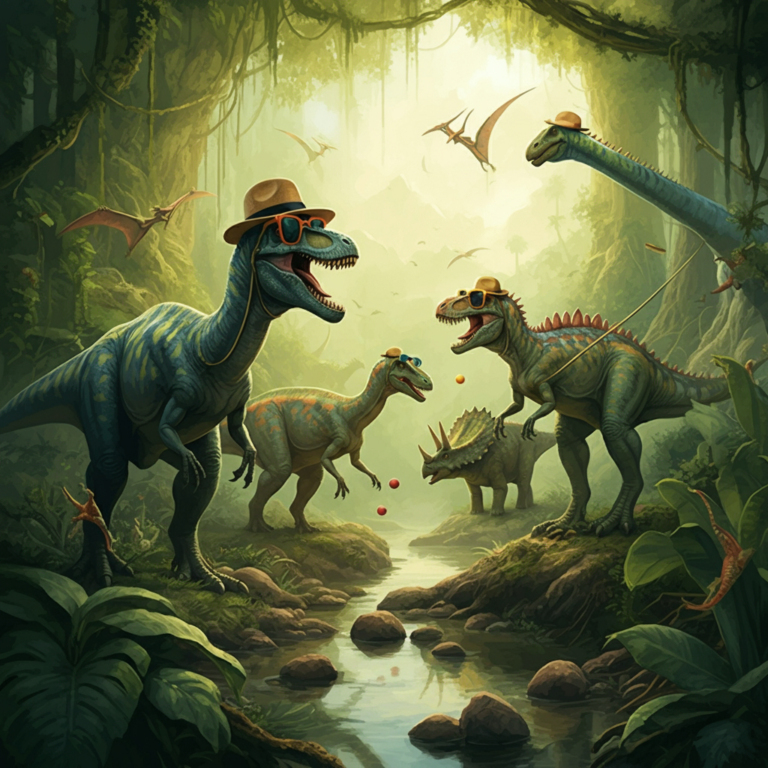Dinosaurs have captivated our imaginations for generations, from their awe-inspiring size to the enduring mystery of their extinction. Most of what we know about dinosaurs comes from countless hours spent studying fossils—and many of the details we’re taught in school are just the basics. But the world of dinosaurs is far richer and more fascinating than many of us realize.
Did you know that the largest dinosaur might not have been the Tyrannosaurus rex, or that not all dinosaurs were covered in scales? This blog explores ten intriguing facts about dinosaurs that are sure to surprise and delight—even if you think you’ve heard it all. Keep reading to uncover the incredible nuances of these prehistoric giants!
What Makes Dinosaurs so Unique?
To understand just how remarkable dinosaurs were, we have to acknowledge their diversity. Dinosaurs ruled Earth for over 165 million years, evolving in ways that we’re still discovering today. Thanks to advances in paleontology, scientists are uncovering more detailed insights into their biology, behavior, and ecosystems. The following ten facts highlight just how spectacularly diverse and fascinating these creatures were.
1. Not All Dinosaurs Were Giants
While it’s easy to picture enormous dinosaurs stomping through prehistoric jungles, many species were actually quite small. For example, Compsognathus, a dinosaur found in Europe, was about the size of a chicken, measuring around 2–3 feet in length. Scientists have discovered that smaller species evolved for various ecological roles, such as chasing down tiny prey or hiding from larger predators.
Why Does This Matter?
The varying sizes of dinosaurs underscored their adaptability. Just like today’s animals, they evolved within specific niches, proving that not every dinosaur roamed the earth as an oversized giant.
2. Some Dinosaurs Had Feathers
One of the most groundbreaking discoveries in paleontology is the presence of feathers on certain dinosaur species. Fossils of dinosaurs like Velociraptor and Archaeopteryx reveal imprints of feathers alongside their bones. Feathers likely served multiple purposes, including warmth, display, and the early stages of flight.
Did Dinosaurs Lead to Birds?
Yes! Modern birds are believed to have evolved from feathered theropod dinosaurs. That means when you watch a sparrow flitting around, you’re seeing a direct descendant of the mighty dinosaurs.
3. Dinosaurs Didn’t All Go Extinct
We often think of the asteroid impact 66 million years ago as completely wiping out dinosaurs. However, not all of them perished. Certain small theropod dinosaurs survived and gradually evolved into the birds we see today. This means dinosaurs are still alive in a way, though not in the form we typically imagine.
4. The Tyrannosaurus Rex Had Bananas for Teeth
The Tyrannosaurus rex could easily top most “fun facts” lists, but did you know its teeth were as large as bananas? Measuring up to 12 inches long, these serrated, thick teeth were perfect for biting through bone and tearing flesh. Paleontologists have even found bite marks on fossils that match T. rex teeth, showing just how powerful their bites were.
How Powerful Was It?
The T. rex had a bite force of up to 12,800 pounds, making it one of the strongest bite forces in the history of life on Earth.
5. Dinosaurs Were Warm-Blooded (Well, Some of Them)
There’s a long-standing debate among scientists about whether dinosaurs were warm- or cold-blooded. Recent discoveries suggest that the answer isn’t straightforward. Some were likely cold-blooded and relied on their environment for body heat, while others, particularly smaller and feathered theropods, may have been warm-blooded to support higher activity levels.
This dual capability may help explain how dinosaurs managed to thrive across drastically different climates, from lush tropical forests to chilly polar regions.
6. Dinosaurs Had Hollow Bones
Birds aren’t the only creatures known for having hollow bones. Many theropod dinosaurs had lightweight, hollow bones as well. This adaptation not only reduced their weight but also likely supported certain species in developing the precursors of flight. It also made them more agile, helping predators chase prey effectively.
7. The Largest Dinosaur Wasn’t T. rex
Contrary to popular belief, the Tyrannosaurus rex wasn’t the largest dinosaur. That title likely belongs to Argentinosaurus, a titanic plant-eater from South America that measured up to 100 feet long and weighed around 100 tons. This sauropod was so massive that an average human would barely reach its knee joints.
8. Some Dinosaurs Had Built-In Armor
Dinosaurs weren’t just predators or prey; some were walking tanks! Ankylosaurs, for example, were herbivorous dinosaurs equipped with armored plates covering their backs and a large club-like tail. These adaptations helped defend them against even the fiercest predators.
9. Dinosaurs Had Exceptional Vision
The vision of dinosaurs, particularly theropods like T. rex, was much sharper than humans’. These predators likely relied heavily on their keen eyesight to track and hunt. Fossil studies of the eye sockets suggest their eyes faced forward, offering them excellent depth perception.
10. Dinosaurs Lived on Every Continent
Dinosaurs weren’t exclusive to any one region; fossil evidence shows they thrived on all seven continents, including Antarctica. During the Mesozoic Era, the continents were arranged in the supercontinent Pangaea, which allowed dinosaurs to spread far and wide before the land masses began to drift apart.
Fossils in Antarctica?
Yes! Species like Cryolophosaurus lived in the frigid climates of Antarctica, proving that some dinosaurs adapted to extreme conditions.
What Can We Learn from Dinosaurs Today?
Dinosaurs teach us about change and adaptability. While their reign ended millions of years ago, their evolutionary legacy is still evident in modern birds. Understanding their biology, habitats, and eventual extinction can help us reflect on our own planet’s history and the significance of biodiversity.
Curious to learn more about the prehistoric giants? Stay tuned for additional articles exploring the everyday lives, behaviors, and ecosystems of dinosaurs. Who knows—your next favorite fun fact may be just a click away!





















0 Comments